Powering a
Net Zero World
Green
Ammonia
Hydrogen
Methanol
Oxygen
Energy Transition
Our Mission
Texas Green Fuels’ mission is to support global net zero objectives that mitigate adverse impacts of climate change. We develop projects that convert the world’s abundant, low-cost renewable electricity into clean fuels such as green ammonia, hydrogen, and methanol.
These sustainable products are produced using renewable electricity for all electricity requirements.
Our Projects
Texas Green Fuels’ projects will produce industrial scale, sustainable, and cost-effective green fuels.
Texas Green Fuels expects to become one of the world’s lowest-cost producers of green fuels by leveraging abundant low-cost renewable energy, developed infrastructure, competitive, skilled workforce, government incentives, and lower construction costs.
Clean Fuel Applications
Marine Fuel
Green ammonia and methanol are expected to contibute to reducing the shipping industry's total GHG emissions by 50% by the year 2050
Power Generation
Export to markets such as Japan that support the development of green ammonia market as "the second LNG"
Fertilizer
Displace conventionally produced ammonia industrial products (80% fertilizers) that generate 1.4% of global CO2 emissions
What We Provide
Green Ammonia
Green ammonia will facilitate global net zero goals by providing clean fuel for shipping and power generation and decarbonizing the traditional fertilizer markets.
Green Hydrogen
Texas Green Fuels will produce green hydrogen initially as a feedstock for its production of green ammonia and methanol. As domestic markets for hydrogen develop, Texas Green Fuels may expand the production of green hydrogen for local consumption.

Green Methanol
Methanol is a type of fuel that burns more cleanly than regular fuels like those that produce SOx, NOx and particulate matter, which are known to cause smog. It can aid ships in complying with environmental fuel rules and contribute to better air quality, which can positively impact human health issues.
Marine Bunkering
Green ammonia and methanol can be used as a marine fuel for ships.
